-
 Bitcoin
Bitcoin $118900
-2.33% -
 Ethereum
Ethereum $4288
-0.13% -
 XRP
XRP $3.151
-3.21% -
 Tether USDt
Tether USDt $1.000
0.02% -
 BNB
BNB $809.5
-1.17% -
 Solana
Solana $175.7
-4.75% -
 USDC
USDC $0.0000
0.01% -
 Dogecoin
Dogecoin $0.2246
-5.75% -
 TRON
TRON $0.3473
2.19% -
 Cardano
Cardano $0.7809
-5.18% -
 Chainlink
Chainlink $21.38
-3.48% -
 Hyperliquid
Hyperliquid $43.29
-5.53% -
 Stellar
Stellar $0.4375
-3.21% -
 Sui
Sui $3.685
-6.68% -
 Bitcoin Cash
Bitcoin Cash $595.2
3.50% -
 Hedera
Hedera $0.2483
-6.60% -
 Ethena USDe
Ethena USDe $1.001
-0.01% -
 Avalanche
Avalanche $23.03
-5.28% -
 Litecoin
Litecoin $119.5
-5.02% -
 Toncoin
Toncoin $3.395
-0.07% -
 UNUS SED LEO
UNUS SED LEO $9.007
-1.19% -
 Shiba Inu
Shiba Inu $0.00001304
-5.44% -
 Uniswap
Uniswap $11.35
1.57% -
 Polkadot
Polkadot $3.898
-5.43% -
 Cronos
Cronos $0.1671
-0.16% -
 Ethena
Ethena $0.8121
-2.45% -
 Dai
Dai $1.000
0.02% -
 Bitget Token
Bitget Token $4.412
-1.73% -
 Monero
Monero $264.0
-0.64% -
 Pepe
Pepe $0.00001128
-8.12%
What are the handling fees for margin trading and contract trading on OKEx?
OKEx charges varying handling fees for margin trading based on the underlying asset, trading pair, leverage level, and margin mode (isolated vs. cross).
Dec 16, 2024 at 10:55 am
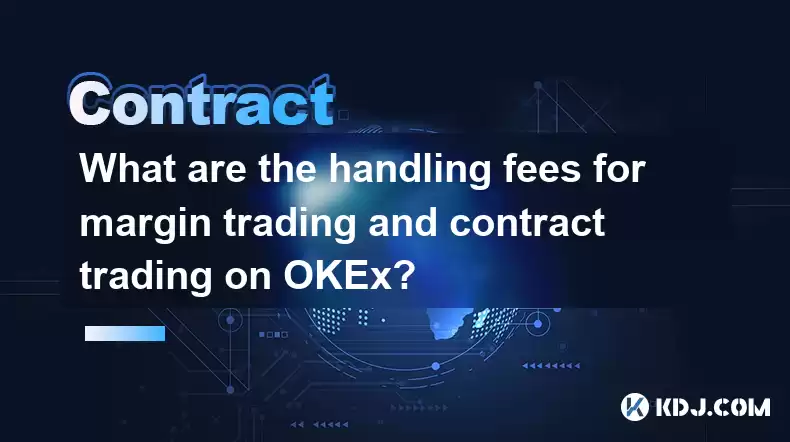
Handling Fees for Margin Trading on OKEx
Margins enable traders to expand their buying power, allowing them to open positions larger than their available balance. This can be advantageous in situations where the trader believes the market will move significantly in the predicted direction. Margin trading, however, involves specific costs known as margin fees.
OKEx, as a prominent cryptocurrency exchange, charges varying handling fees for margin trading based on the underlying asset and the trading pair utilized. These fees are crucial for traders to understand as they impact their potential profitability. Margin fees are typically calculated as a percentage of the borrowed funds, with different rates applicable to different trading pairs.
- Spot Margin Trading Fees:
Spot margin trading refers to borrowing funds to trade on the spot market. On OKEx, spot margin trading fees vary depending on the cryptocurrency being traded and the loan-to-value (LTV) ratio chosen. The LTV ratio represents the percentage of the trader's own funds relative to the borrowed amount. Higher LTV ratios generally incur higher margin fees as they increase the exchange's risk exposure.
For example, spot margin trading with BTC/USDT pair typically incurs a handling fee of 0.02% per day, while trading ETH/USDT pair incurs a fee of 0.03% per day. These fees are subject to adjustments based on market conditions and the exchange's risk management policies.
- USDT-Margined Perpetual Futures Trading Fees:
USDT-margined perpetual futures trading involves using USDT as collateral to trade futures contracts. On OKEx, these contracts have no fixed expiry date, allowing traders to hold positions indefinitely. Similarly, the handling fees for USDT-margined perpetual futures trading depend on the underlying asset and the leverage level employed.
For instance, trading BTC-USDT perpetual futures contracts with 5x leverage incurs a handling fee of 0.005% per day, while ETH-USDT perpetual futures contracts with 10x leverage incur a fee of 0.015% per day. These fees are notably lower compared to spot margin trading due to the inherent benefits of perpetual futures contracts, such as reduced price volatility and lower funding rates.
- Coin-Margined Perpetual Futures Trading Fees:
Coin-margined perpetual futures trading allows traders to use the underlying cryptocurrency as collateral to trade futures contracts. This type of margin trading provides traders with direct exposure to the price movements of the underlying asset and is generally more cost-effective than USDT-margined perpetual futures trading.
On OKEx, coin-margined perpetual futures trading fees are typically lower than USDT-margined perpetual futures trading fees. For instance, trading BTC-USD perpetual futures contracts with 5x leverage incurs a handling fee of 0.0005% per day, while ETH-USD perpetual futures contracts with 10x leverage incur a fee of 0.0015% per day.
- Isolated Margin Trading Fees:
Isolated margin trading is a unique feature offered by OKEx that allows traders to isolate the risk of each margin position. In this mode, traders can allocate a specific amount of funds for a particular margin position, limiting the potential losses to the allocated funds. Isolated margin trading generally incurs higher handling fees compared to cross margin trading due to the reduced risk exposure for the exchange.
- Cross Margin Trading Fees:
Cross margin trading, on the other hand, allows traders to share their margin across all open positions. This approach enables traders to maximize their capital efficiency by utilizing their entire account balance as margin. Cross margin trading typically incurs lower handling fees compared to isolated
Disclaimer:info@kdj.com
The information provided is not trading advice. kdj.com does not assume any responsibility for any investments made based on the information provided in this article. Cryptocurrencies are highly volatile and it is highly recommended that you invest with caution after thorough research!
If you believe that the content used on this website infringes your copyright, please contact us immediately (info@kdj.com) and we will delete it promptly.
- Dogecoin, Presale, Surge: Riding the Meme Coin Wave
- 2025-08-12 11:10:12
- Dogecoin, Tron, and the ROI Reality Check: What's a Crypto Investor to Do?
- 2025-08-12 11:15:12
- Ethereum Layer-2 Scaling Competition Heats Up as ETH Breaks $4K
- 2025-08-12 10:30:12
- China Regulation, Stablecoins, and BNB Presale: Navigating the Crypto Landscape
- 2025-08-12 11:30:12
- Meme Coins, Investment, and Token Burns: What's Hot in 2025?
- 2025-08-12 10:30:12
- BlockDAG, Chainlink, Hedera: The Cryptos Enterprises are Eyeing
- 2025-08-12 09:30:12
Related knowledge
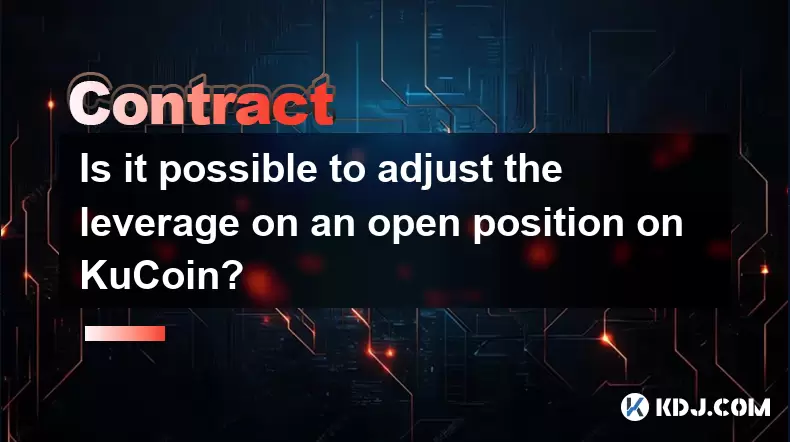
Is it possible to adjust the leverage on an open position on KuCoin?
Aug 09,2025 at 08:21pm
Understanding Leverage in KuCoin Futures TradingLeverage in KuCoin Futures allows traders to amplify their exposure to price movements by borrowing fu...
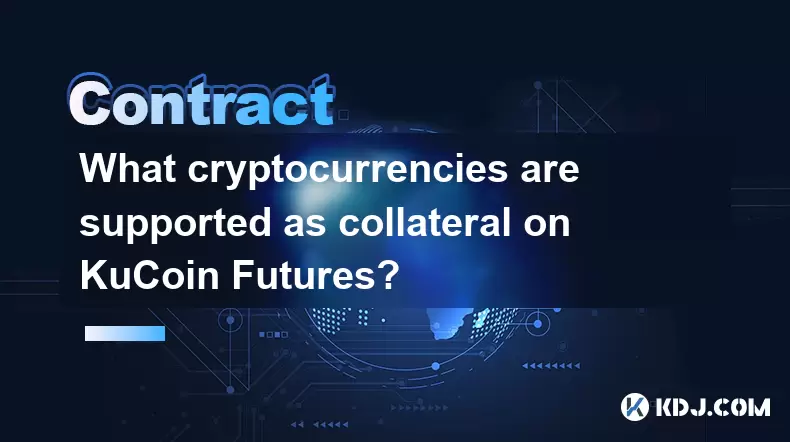
What cryptocurrencies are supported as collateral on KuCoin Futures?
Aug 11,2025 at 04:21am
Overview of KuCoin Futures and Collateral MechanismKuCoin Futures is a derivatives trading platform that allows users to trade perpetual and delivery ...
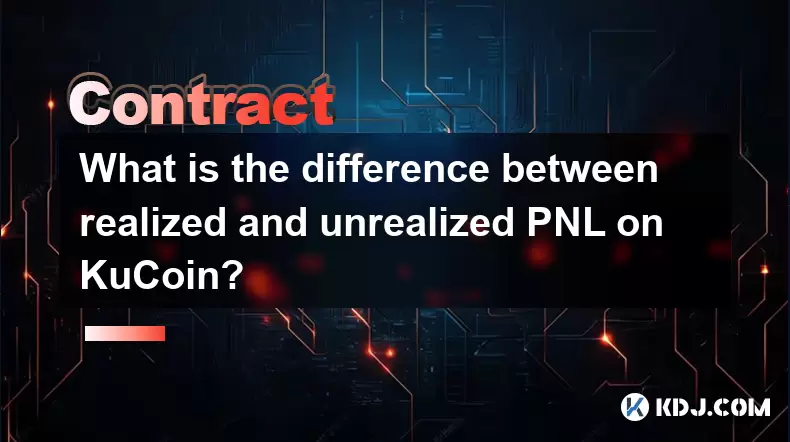
What is the difference between realized and unrealized PNL on KuCoin?
Aug 09,2025 at 01:49am
Understanding Realized and Unrealized PNL on KuCoinWhen trading on KuCoin, especially in futures and perpetual contracts, understanding the distinctio...
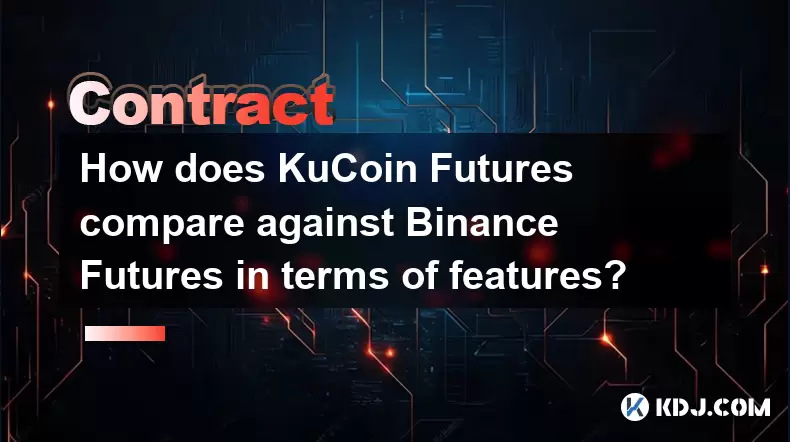
How does KuCoin Futures compare against Binance Futures in terms of features?
Aug 09,2025 at 03:22am
Trading Interface and User ExperienceThe trading interface is a critical component when comparing KuCoin Futures and Binance Futures, as it directly i...
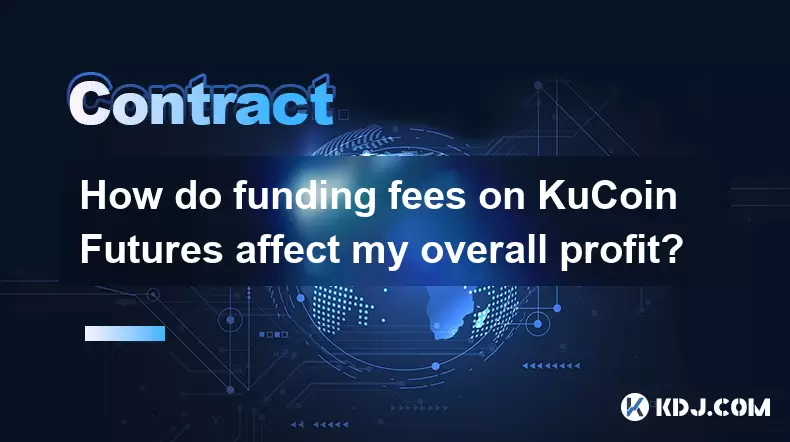
How do funding fees on KuCoin Futures affect my overall profit?
Aug 09,2025 at 08:22am
Understanding Funding Fees on KuCoin FuturesFunding fees on KuCoin Futures are periodic payments exchanged between long and short position holders to ...
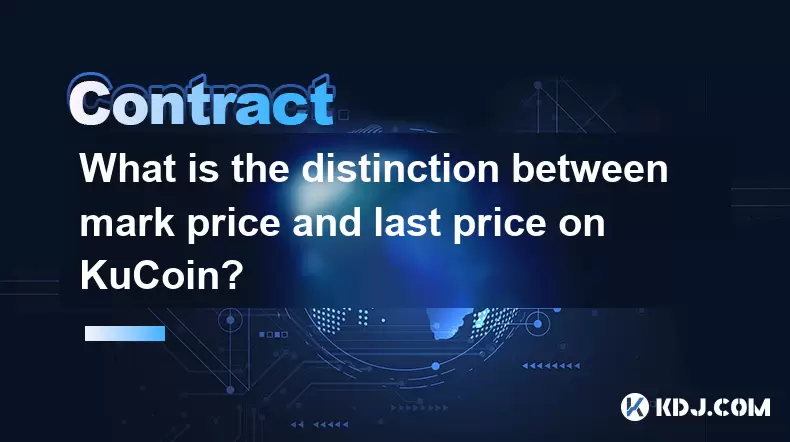
What is the distinction between mark price and last price on KuCoin?
Aug 08,2025 at 01:58pm
Understanding the Basics of Price in Cryptocurrency TradingIn cryptocurrency exchanges like KuCoin, two key price indicators frequently appear on trad...

Is it possible to adjust the leverage on an open position on KuCoin?
Aug 09,2025 at 08:21pm
Understanding Leverage in KuCoin Futures TradingLeverage in KuCoin Futures allows traders to amplify their exposure to price movements by borrowing fu...

What cryptocurrencies are supported as collateral on KuCoin Futures?
Aug 11,2025 at 04:21am
Overview of KuCoin Futures and Collateral MechanismKuCoin Futures is a derivatives trading platform that allows users to trade perpetual and delivery ...

What is the difference between realized and unrealized PNL on KuCoin?
Aug 09,2025 at 01:49am
Understanding Realized and Unrealized PNL on KuCoinWhen trading on KuCoin, especially in futures and perpetual contracts, understanding the distinctio...

How does KuCoin Futures compare against Binance Futures in terms of features?
Aug 09,2025 at 03:22am
Trading Interface and User ExperienceThe trading interface is a critical component when comparing KuCoin Futures and Binance Futures, as it directly i...

How do funding fees on KuCoin Futures affect my overall profit?
Aug 09,2025 at 08:22am
Understanding Funding Fees on KuCoin FuturesFunding fees on KuCoin Futures are periodic payments exchanged between long and short position holders to ...

What is the distinction between mark price and last price on KuCoin?
Aug 08,2025 at 01:58pm
Understanding the Basics of Price in Cryptocurrency TradingIn cryptocurrency exchanges like KuCoin, two key price indicators frequently appear on trad...
See all articles

























































































